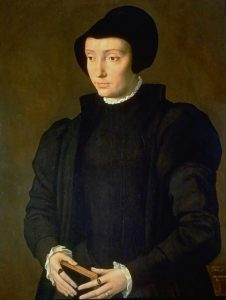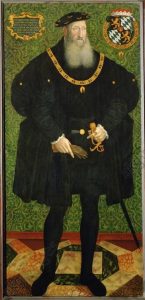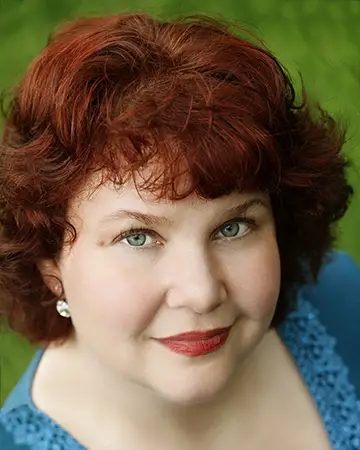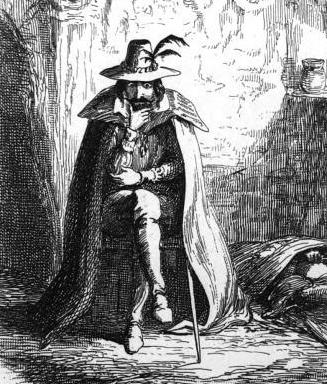
Portrait of a woman said to be Dorothea or her sister Christina.
Dorothea Oldenburg, Princess of Denmark and Norway,1 was born to King Christian II of Denmark and Norway, and Isabella of Austria on 10 November 1520. Isabella of Austria was younger sister to Charles V, Holy Roman Emperor, and a niece of Katherine of Aragon. Dorothea was a niece of Charles V.
Dorothea’s father, Christian II, was forced to abdicate his throne on 20 January 1523. Thereafter, Dorothea and her family, including her better-known little sister Christina of Denmark, fled to the Netherlands. Three-year-old Dorothea’s great-aunt, Margaret of Austria, was serving as Regent of the Netherlands; Margaret served in this capacity from 1507 to 1515, and again from 1519 until 1530. Margaret was pro-English.
A proposal for marriage suggested by England’s Cardinal Wolsey, that famous agent of Henry VIII, came to Dorothea in 1527. Perhaps as a bid to seemingly legitimise Henry Fitzroy, Duke of Richmond and Henry VIII’s son by his mistress Elizabeth Blount, a marriage to a member of the Habsburg dynasty could have elevated Henry Fitzroy’s status a potential heir to the English throne. This marriage arrangement was declined.

Frederick of the Palatinate
Dorothea was thought to be attractive, with a similar look to that of her younger sister Christina. Reportedly, Dorothea was a little shorter than Christina and had a slighter frame. Dorothea did differ wildly from her sister Christina in that Dorothea at one point, Dorothea and her husband Frederick did seem to fully embrace the Protestant religion, whereas most of the Habsburg family remained Roman Catholic. Dorothea’s uncle, the Holy Roman Emperor Charles V, was incensed by this, which caused Dorothea to at least outwardly appear as a Catholic. She and her husband did their best to stop the spread of Protestantism in their domain.
Dorothea was widowed in 1556. She and her husband enjoyed a good marriage, sharing similar interests. Sadly, the couple was childless. This worked against Dorothea when, in 1559, she was declared titular Queen of Denmark and Norway. In 1561, Dorothea was eventually convinced by her younger sister Christina to abdicate to Christina’s son, as Dorothea had no heirs of her body and was very unlikely to conceive given her widowhood and age.
Otto-Henry, Elector of the Palatinate, became the successor to Dorothea’s husband in 1556. Otto-Henry successfully introduced the Protestant Reformation. Much to the horror of Dorothea’s Habsburg relations, she embraced the Reformation. Her sister Christina remained a Catholic, and Christina tried to bring Dorothea back into the Catholic fold.
Dorothea died in 1580 and was buried in the Church of the Holy Ghost in Heidelberg, not far from the base of Heidelberg castle, where she married her husband.
Heather R. Darsie lives in the United States with her family and three parrots. She works in the legal field, with a focus on children. She obtained a Bachelor of Arts degree in German Languages and Literature, then a Juris Doctorate in American jurisprudence, and studied abroad in Costa Rica and France. Heather has always loved history. She first became acquainted with Elizabeth I when she was in middle school and chose to write a book report about her. Since then, she has always held an interest in the Renaissance and its numerous enigmatic citizens, with particular focus on the history of England and Italy. She is currently working on a book on the heraldry of Tudor women and is also researching Anne of Cleves.
Notes
- There are two Dorotheas of Denmark; namely, the Dorothea whom we learned about today, and Christian II’s cousin by his brother John, also named Dorothea. Christian’s cousin Dorothea went on to become the Duchess of Prussia. She was born in 1504.The two are frequently conflated on the internet. But if it’s on the internet, it must be true! Right?
Sources & Suggested Reading
- Cartwright, Julia. Christina of Denmark, Duchess of Milan and Lorraine, 1522-1590. New York: E. P. Button & Company (1913).
- Encyclopædia Britannica Online, s. v. "Frederick I", accessed November 07, 2016, https://www.britannica.com/biography/Frederick-I-king-of-Denmark-and-Norway.
- Encyclopædia Britannica Online, s. v. "Margaret of Austria", accessed November 07, 2016, https://www.britannica.com/biography/Margaret-of-Austria.
- Encyclopædia Britannica Online, s. v. "Christian II", accessed November 07, 2016, https://www.britannica.com/biography/Christian-II-Scandinavian-king.



Can you help with some information as I am confused and think I am now imaging something? Two years ago I found a novel by Philippa Wiat that I read in my teens called Heir of Arlington about Anne Boleyn and Thomas Wyatt. The book brought to life several scenes from the 1520s and the court, with some international interludes, one of which mentioned the visit of Charles v and the events of 1520 to 1523 in Denmark. One event had the above family family Denmark visit England in 1523 and Henry Viii can’t get rid of them for several months before they are all packed of to the Netherlands, where they do indeed stay in exile. In one scene he is dancing for glee as they are finally leaving, which is a bit of literary cleverness, but I cannot find any historical information on the visit or stay. Is any of this historical? Other than Charles v, did any other relatives, members of the imperial, Spanish or Danish royal family come to England between 1520 and 1525? Sorry to be a pain. Perhaps I sm imagining things. Thanks in advance.
LynMarie
Hi LynMarie,
I hadn’t read of a visit from the Danish royals before but I’ve just found reference to Henry VIII and Christian II of Denmark and “their confirmation of the treaty of peace between Henry VII and John [of Denmark]” in London in June 1523. This is in the Cotton Nero MS B III – click here – and it’s number 37 on the left hand page. Further mentions on that page (41 and 42) do make it sound like Christian and his wife, Isabella, were in London.
Wikipedia (not always accurate!) states:
“Jutland finally rose against him, renounced its allegiance, and offered the Danish crown to Christian’s uncle, Duke Frederick of Holstein, 20 January 1523. So overwhelming did Christian’s difficulties appear, that he embarked a ship to seek help abroad. On 1 May he landed at Veere in Zeeland. During the years of his exile, the king led a relatively humble life in the city of Lier in the Netherlands, waiting for military help from his reluctant imperial brother-in-law.”
So perhaps Christian did visit London while he was in exile.
Just found “Reforming the North: The Kingdoms and Churches of Scandinavia, 1520–1545” by James L. Larson and in that it talks about Henry VIII being a gracious host to the exiles and Cardinal Wolsey negotiating with them. See top of p150 at https://books.google.es/books?id=y-sgAwAAQBAJ&pg=PA150&lpg=PA150&dq=christian+ii+denmark+london+1523&source=bl&ots=sD1BEKt3MF&sig=xKpMlJT-kU9EUxpu1_EhUm7CmSE&hl=en&sa=X&ved=0ahUKEwjIn5Gyos7QAhXB6xQKHdsHBgo4ChDoAQg5MAs#v=onepage&q=christian%20ii%20denmark%20london%201523&f=false
Hi Claire, thanks for the information and link. I found some information in Julia Cartwright bio on Christina of Milan that confirms Cardinal Wolsey hosted Christian and Isabella and kids in 1523, with Queen Katharine taking the Queen and Henry Christian by the hand to escort them to the palace. It did sound as if Henry was reluctant to have them here but Wolsey was a more sympathetic host. I am pleased I am not going potty, as I read the novel some time back. I will have a look at the link, thanks again for your assistance. I really don’t know were you find the time, but your hard work on this and the ABF site and all those books, interviewing, research, etc, family, pets and tours, is very much appreciated. If there was an Emmy or Osca or something for you I would vote for you, no nominate you. Thanks again for taking the time to help with this.
Best wishes to you and Tim and family
LynMarie
Hi LynMarie,
That’s ok, research is something I really enjoy so I use any excuse to get digging!
Thank you, your kind words mean a lot to me. I enjoy what I do so that makes the long hours worth it and I love being part of the interactive Tudor history community online. My research and writing keep me sane, I think.
Your support means so much. Thank you.
Best Wishes to you and Steve too.
Claire x
Thanks Claire.